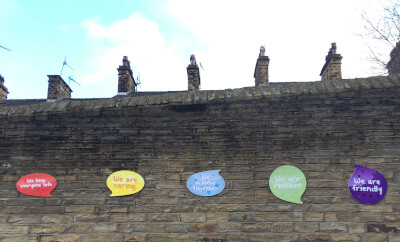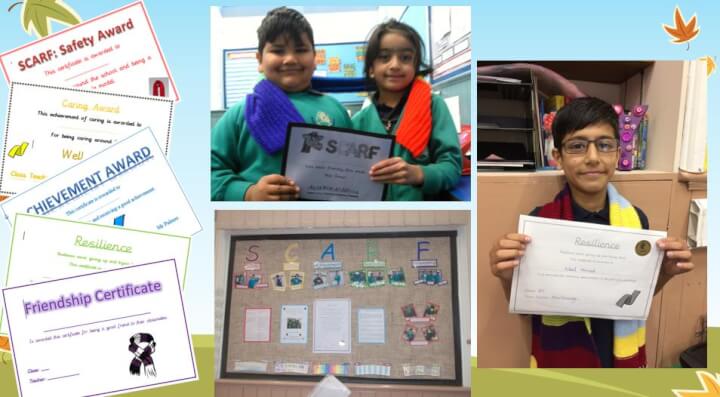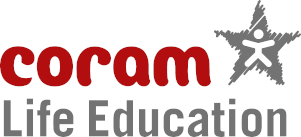SCARF at Frizinghall primary school, Bradford
Coram Life Education's SCARF resources provide everything a school needs to create a whole-school approach to children's emotional health and wellbeing, based on the values of S - safety, C - caring, A - achievement, R - resilience, and F - friendship.
What difference does it make when a school embraces and embeds these values in its approach to learning? We asked Tim Palmer, Acting Deputy Head at Frizinghall Primary School, about his school's journey to becoming a SCARF school - here's what he told us.

Why did Frizinghall Primary School decide to adopt a whole-school approach to behaviour, safety and learning?
We realised we needed to find a new approach after meeting to discuss behaviour issues, particularly in Upper Key Stage 2. We chose SCARF because it enables the children to have an input into how behaviour should look in school; its links with our PSHE lessons also promised to give children lots of reminders of our expectations of their behaviour. It linked really well to other things we were already doing - Investors in Pupils and Restorative Circles - and importantly it allowed us to focus our effort and attention on good behaviour rather than unwanted behaviours.
What appealed to you about the SCARF approach?
We saw the impact SCARF had at Allerton Primary School, which is a school with a similar set of circumstances to our own. Sharon Lambert (former Headteacher of Allerton) outlined the positive effect of SCARF on children’s behaviour, outlook, and wellbeing in her school. We thought it could work for us and that we could incorporate what was already working well at Frizinghall with the principles SCARF promotes. We embraced the opportunity to incorporate SCARF’s ideas into all aspects of our behaviour policy, linking PSHE, behaviour management, student council and a framework for rewarding success. Also, I feel that the resources SCARF offers are outstanding. They help teachers with the long- and short-term planning of PSHE.
How did you get everyone on board with the SCARF approach?
We originally introduced the scheme through staff and student council meetings. Each class used the principles of SCARF (and its values of Safety, Caring, Achievement, Resilience and Friendship) to create class displays, class mottos, vision statements and rules. We also adopted it for our PSHE scheme within school. Our Learning Mentors supported this work by creating a school SCARF display where we could celebrate successes throughout the year. Student council then created school-based achievement certificates for each aspect of SCARF (Safety, Caring, Achievement, Resilience and Friendship). At the end of the first year, we asked the children about the impact of SCARF and have used what they told us to improve the work, providing more training to break down barriers and embed SCARF fully throughout the school.
Can you give us some examples of how you used the SCARF values in day-to-day school activities?
We use the SCARF scheme throughout the school from Nursery to Year 6 and this builds continuity throughout the school. It's primarily used in PSHE lessons, and we use the SCARF resources to promote good British Values, positive morals and ethics as they're really easy to navigate. Children are actively encouraged to engage with SCARF often throughout their day and are well versed on what being resilient, safe and friendly means, and what they need to do to achieve well in school. Each letter of SCARF provides a half-termly focus for us. Because SCARF is also a part of our behaviour management (linked to IIP) if a child were to misbehave, they might be asked, ‘Is that a caring thing to do? Or Friendly thing to do?' so the language helps to reinforce and embed the ideas even more.
Do you feel that SCARF has prepared your school and teachers to meet the DfE statutory Relationships Sex and Health Education requirements?
For older year groups, we have reviewed the Relationships Education programme and will be using it fully – with respect to the cultural needs of the community within which the school is located. We also use the lessons focusing on relationships and growing and changing for our younger year groups and find them useful.
Can you summarise any positive changes in your school that you have seen as a result of using SCARF? Have you noticed changes in pupils’ attendance, attitudes, behaviour, sense of safety, progress or achievement?
SCARF has given the school – both staff and children – a common language, or framework, of what good behaviour within school should look like. Children are more adept now at discussing what is safe, or what is caring, or how they are being resilient. They know achievement is more than purely an academic consideration, and what friendship at Frizinghall looks like. Our survey from last year told us that KS1 were able to quickly establish these principles. What is going to be fascinating to watch is how our children apply the values of SCARF as they move through the school, and seeing the impact of SCARF as they get older.


